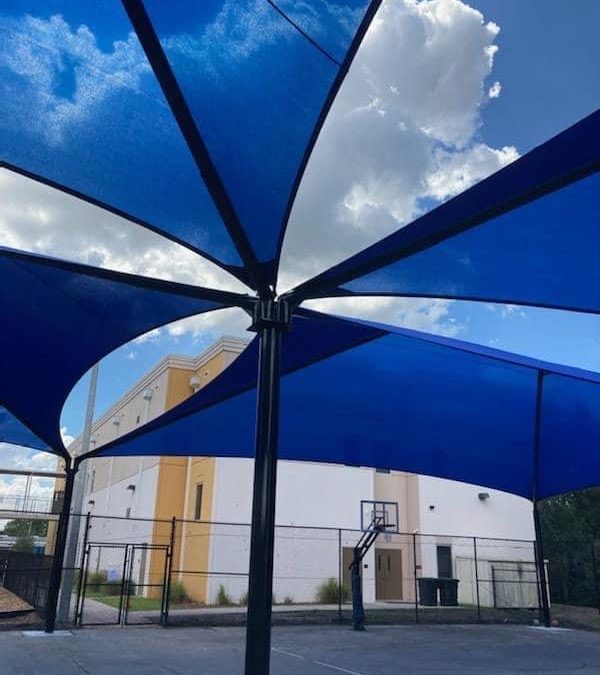Having a cozy outdoor area for users is a must for any architecture project to succeed. Modular shade structures can be used to create light, flexible, and visually beautiful spaces that provide protection from wind, dust, sun, rain, snow, and noise at any time of year.
In light of this, what qualities must to be considered while selecting shade structures for outdoor areas? We’ve included our top picks below for your consideration.
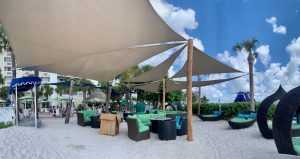 1. The shade structure needs to be able to withstand weather conditions well.
1. The shade structure needs to be able to withstand weather conditions well.
A decent structure should provide UV protection, be able to withstand wind and precipitation, act as a barrier against dust, and attenuate noise so that people can enjoy the outdoors in all weather. Certain types of constructions, for example, are capable of withstanding wind gusts as high as 105 miles per hour.
To accomplish these looks, perimeter steel frameworks, stainless steel elements and accessories, waterproof textiles, and UV stabilized high-density polyethylene fabrics all work incredibly well. The degree of protection against damaging UV radiation can also be influenced by the color selection.
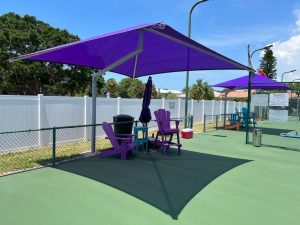 2. It must make the best use of available space in accordance with the shade structure’s dimensions, form, and support points.
2. It must make the best use of available space in accordance with the shade structure’s dimensions, form, and support points.
We can shade the outdoors without obstructing or limiting the living area thanks to a number of alternatives. By connecting many components and separating their pillars, umbrellas with a single point of support that are square, rectangular, hexagonal, or octagonal in shape can efficiently cover wide regions.
Conversely, cantilever-style constructions rise through a pair of support points and soar over the area without interfering with the activity below. They are excellent in parking lots, sidewalks, bleachers, and bus stop seating.
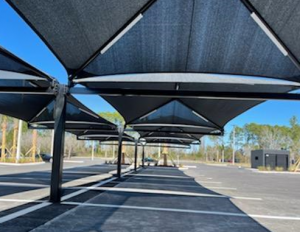 3. If your shade is made of cloth, be very mindful of its quality.
3. If your shade is made of cloth, be very mindful of its quality.
A shade structure’s fabric is important, even beyond deciding the overall design of the room. Australian engineers created Commercial 95® 340, which is composed of premium UV-stabilized HDPE. Robust and sturdy, it is appropriate for the severe Australian climate.
We are pleased to announce that this architectural shade cloth is the first in the world to receive both Oeko-Tex® 100 and Greenguard® certifications. It is also 100% lead and phthalate-free.
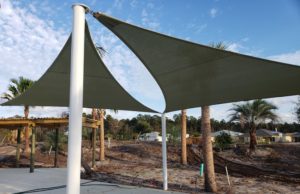
- The height of your shade structure has the power to drastically alter the room’s ambience.
When defining the outdoor space’s character, the height of the roof or eaves is crucial. While a greater height creates a more formal and open ambiance, a lower one might create a more private and secluded environment. Although there is a wide range of shade structure heights, seven to twelve feet is the most typical.
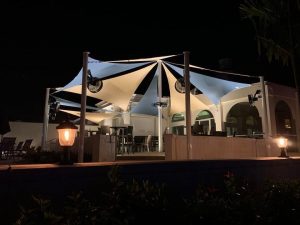 5. Create extraordinary and dynamic areas using sail-like structures.
5. Create extraordinary and dynamic areas using sail-like structures.
Sail-like shades can be arranged in a variety of shapes—triangular, hyperbolic, hexagonal, and square—to create lively and entertaining environments that blend colors and vary in heights and configurations.

